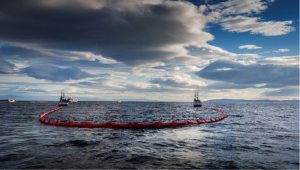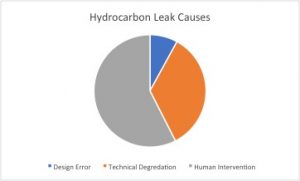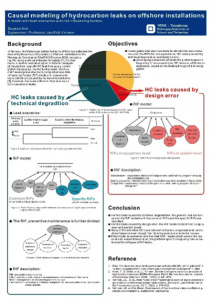The Main Cause of Hydrocarbon Leaks Confirmed by University Study
 So, we all have our own theories about why leaks occur, old faulty pipework and fittings, poor system design and of course, human error. But which is the real culprit and by how much? Well finally, true data has been used in a scientific fashion, to answer those questions and it makes interesting and eyebrow raising reading.
So, we all have our own theories about why leaks occur, old faulty pipework and fittings, poor system design and of course, human error. But which is the real culprit and by how much? Well finally, true data has been used in a scientific fashion, to answer those questions and it makes interesting and eyebrow raising reading.
The Norwegian University of Science and Technology in Trondheim, decided to take a look at these very questions and published their findings in a short report. Lead by Professor Jan Erik Vinnem, the university students processed a considerable amount of data. The data was provided by the Norwegian Petroleum Safety Authority, who had collected detailed records of all hydrocarbon leaks on the Norwegian continental shelf since the year 2000.
The finding of the study showed that there were three main contributing factors:
- Design error
- Technical Degradation
- Human Intervention
“But which is the main culprit and by how much” I hear you cry. Well, design error accounted for 8% of all offshore hydrocarbon leaks. This was followed by technical degradation, accounting for 34.5%. This left, yes, you guessed it, good old human error which accounted for a massive 57.5% of all leaks.

So, what do we take from the findings of this report?
- Get your calculations right at design stage
- Keep on top of your planned maintenance
- Train your people, give them the right tools for the job and make it as difficult as possible to get it wrong
The training and the tools are pretty straight forward, but what about that last, key part of the puzzle? Until recently, we relied upon the experience of the technician and their ability to follow written instructions. This doesn’t really cut it as fail-safe method as there is still tons of scope for human error. What the industrial bolting industry needed, was a system that would lead the technician through every stage of the process, ensuring the correct tightening sequences and torque or tension loads were applied. They needed a system that could not be overridden and would actually stop the bolting process if it was being done incorrectly.
That system is now available in the revolutionary Torq-Comm Commander XT data collection device and software packages. It ticks all the boxes, and then some and will make that 57.5% a thing of the past.
This approach of course doesn’t just apply to offshore hydrocarbons, it can apply to any industrial joint. Get it wrong and the numbers are likely to be the same, get it right and you are assured 100% joint integrity assurance.




